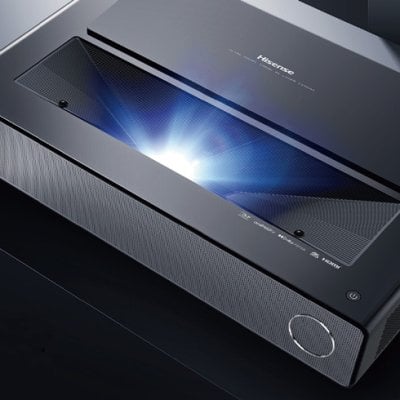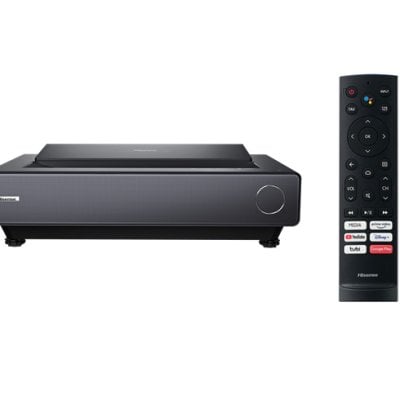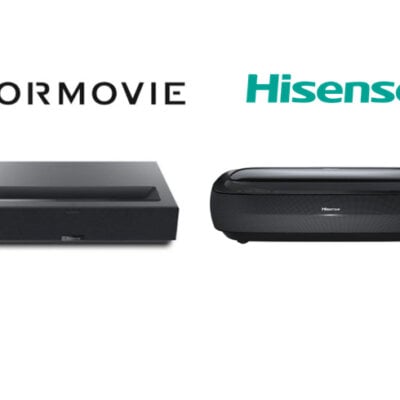
Hisense 100L5G and Hisense 100L9G are 4K UST projectors with laser as the light source. Many projector buyers wonder about the differences between the two projectors. In this guide, we will compare the two projectors side by side.
Hisense 100L5G vs 100L9G
Overview
By means of the side-by-side comparison below, we can find that Hisense 100L9G is more expensive and therefore has better configurations. In the next section, we will compare the two projectors in detail.
| Models | Hisense 100L5G | Hisense 100L9G |
| Price | $3,999.99 | $5,499.99 |
| Brightness | 2,700 ANSI lumens | 3,000 ANSI lumens |
| Contrast | 1,000,000:1 | 1,000,000:1 |
| Resolution | 4K UHD | 4K UHD |
| Dolby Vision | No | Yes |
| Image Size | 100” | 100” |
| Light Source | Laser | Laser |
| Lamp life | 25,000 hrs | 25,000 hrs |
| Display Technology | DLP | DLP |
| Throw Ratio | 0.25:1 | 0.25:1 |
| System | Android TV | Android TV |
| App store | Google Play | Google Play |
| Bluetooth | Yes | Yes |
| Wi-Fi | Yes | Yes |
| Chipset | 0.47” DMD | 0.47” DMD |
| Dimension | 21.5” x 13.6” x 6.2” | 24” x 13.6” x 6.1” |
| Audio Tech | Dolby Atmos, Dolby Digital | Dolby Atmos, Dolby Digital |
| Speakers | 30W | 40W |
| Interfaces | 3x HDMI 1xLAN 1x USB 3.0 1x USB 2.0 | 3x HDMI 1xLAN 1x USB 3.0 1x USB 2.0 |
Appearance
The two projectors are similar in style and shape, and their overall styles are elegant and brief. But they have several differences in appearance.
Hisense 100L5G’s brand logo is located at the left part while Hisense 100L5G’s brand logo is centered. Hisense 100L5G projector has contrasting colors of black and silver while Hisense 100L5G adopts contrasting colors of black and grey color.
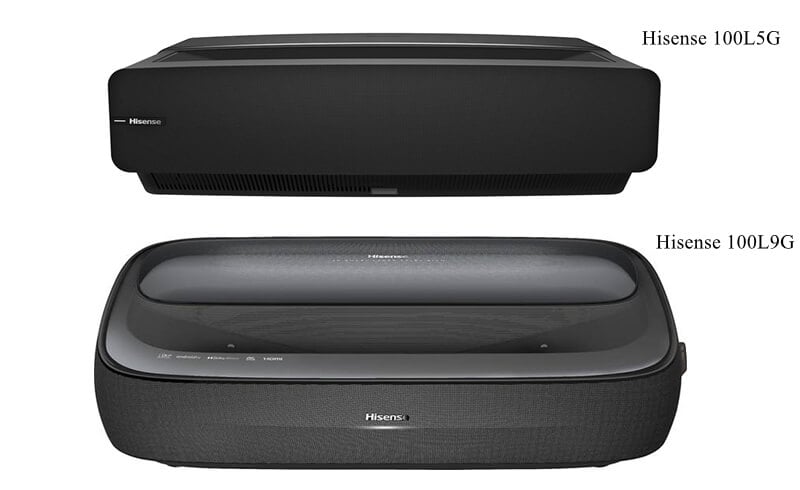
Regarding interfaces, all interfaces of Hisense 100L5G are located at the back panel while one of Hisense 100L9G’s USB interfaces is equipped on the side panel and the other ports are located on the back panel. This side USB is designed for users to plug the unplug the external device conveniently. If all interfaces are located at the back panel, it may be inconvenient to connect some external devices such as smartphones.
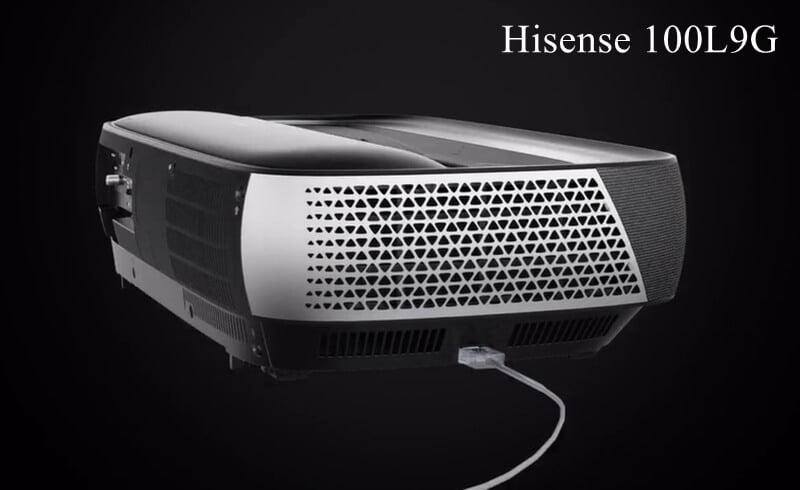
As for dimensions, Hisense 100L5G is relatively small. Hisense 100L5G measures 21.5” x 13.6” x 6.2” but Hisense 100L9G measures 24” x 13.6” x 6.1”. That is to say, Hisense 100L9G is relatively wider.
Image
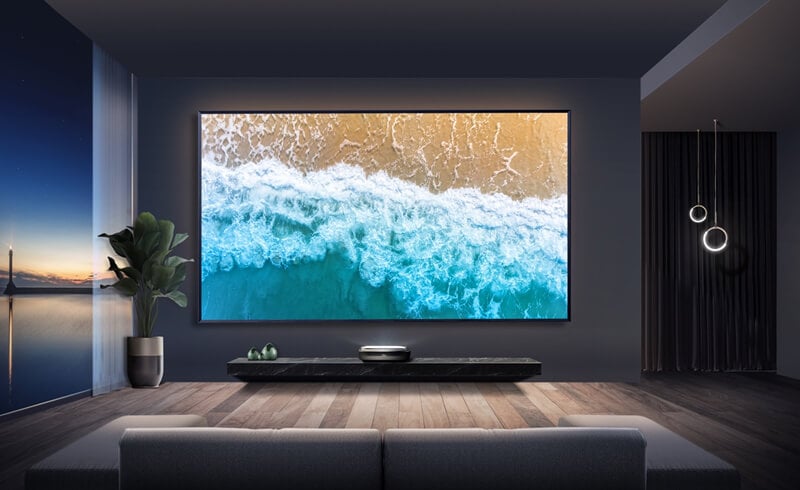
The two projectors are both DLP projectors with 4K resolution, but the two projectors are different in terms of brightness and HDR compatibility.
The brightness greatly determines the viewing performance of projectors under strong ambient light. The higher the brightness, the better image quality it delivers during the daytime.
Hisense 100L5G has 2,700 ANSI lumens while Hisense 100L9G has 3,000 ANSI lumens. That is to say, Hisense 100L9G is brighter than Hisense 100L5G.
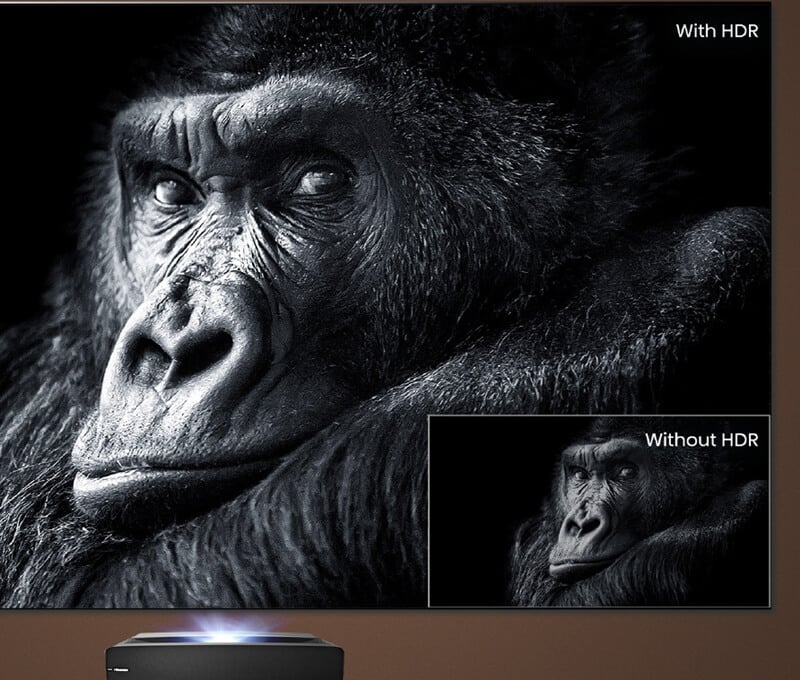
Regarding HDR compatibility, Hisense 100L5G is compatible with HDR10, and Hisense 100L9G is compatible with HDR10, HLG, and Dolby Vision. Put simply, Hisense 100L9G doesn’t support HLG. HDR can enhance the image quality by improving the contrast and image dark details.
You may be interested in Dolby Vision vs HDR10 vs HLG.
Audio
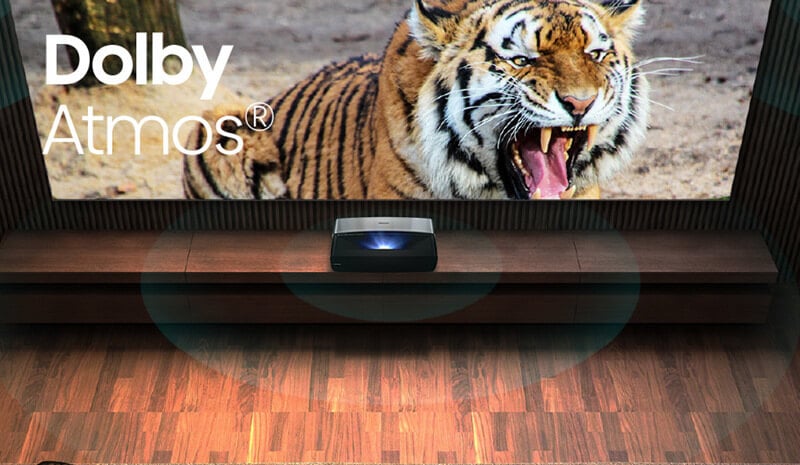
The audio performance is an essential part of home theater. Hisense 100L5G has built-in 30W speakers while Hisense 100L9G has built-in 40W speakers. In other words, Hisense 100L5G has more powerful speakers.
The two projectors both support Audio Return Channel eARC, Dolby Atmos and Dolby Digital, producing pleasant surround sound.
Another audio difference between Hisense 100L5G and Hisense 100L9G is the WiSA audio output. Hisense 100L9G supports WiSA but Hisense 100L5G doesn’t. WiSA (Wireless Speaker and Audio) is a new wireless audio specification for high-definition, multimedia, and low-latency audio.
Connectivity
The two projectors have no obvious differences in connectivity. As for wireless connectivity, they both support Wi-Fi and Bluetooth. In terms of wired connectivity, they are both equipped with 3 HDMI interfaces, 2 USB interfaces, and various audio interfaces.


With these interfaces, we can connect the projector to game consoles, computers, TV sticks, TV boxes, and other external devices conveniently.
Gaming Performance
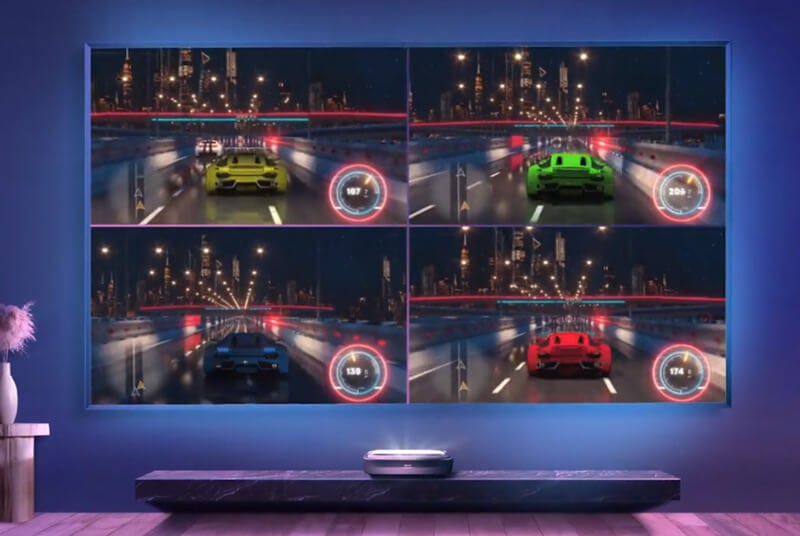
For gamers, the gaming performance is also a decisive point for a projector.
Hisense 100L5G has an input lag of 34.5ms while Hisense 100L9G has an input lag of 30ms. Hisense 100L5G has an ALLM mode ( Auto Low Latency mode ) while Hisense 100L9G doesn’t. ALLM automates the ideal latency settings for a smooth, lag-free, uninterrupted viewing and interaction experience. In many cases, it is known as Game Mode, which usually must be set manually and requires the player to navigate menus and settings and subsequently cut back to normal view.
The 100L9G model supports 4K/120Hz HDMI Inputs but the 100L5G doesn’t.
On the whole, Hisense 100L9G is better in gaming performance.
| Hisense 100L5G | Hisense 100L9G | |
| Input Lag | 34.5ms | 30ms |
| ALLM | Yes | No |
| 4K/120Hz HDMI Inputs | No | Yes |
Pros and Cons
Hisense 100L5G

Pros
- 4K Resolution
- Ultra Short Throw
- Smaller Size
- ALLM
- Android TV and TV Tuner
- HDR10
Cons
- Relatively Lower Brightness
- No 3D
- No HLG
Hisense 100L9G
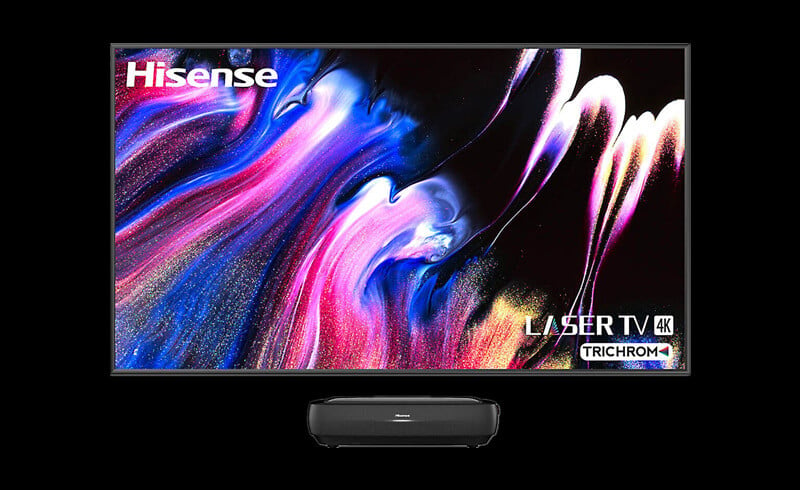
Pros
- 4K Resolution
- Ultra Short Throw
- Higher Brightness
- 40W speakers
- Better Gaming Performance
- Android TV and TV Tuner
- HDR 10 and HLG
- WiSA Audio Output
Cons
- No ALLM
- No 3D
Conclusion
After comparing Hisense 100L5G and 100L9G, we can find that Hisense 100L5G is cheaper and has a smaller size. Hisense 100L9G is better in brightness, audio, and gaming performance. The two projectors are both UST projectors that produce giant images within a short distance. You can pick one based on the budget.
Related Posts

